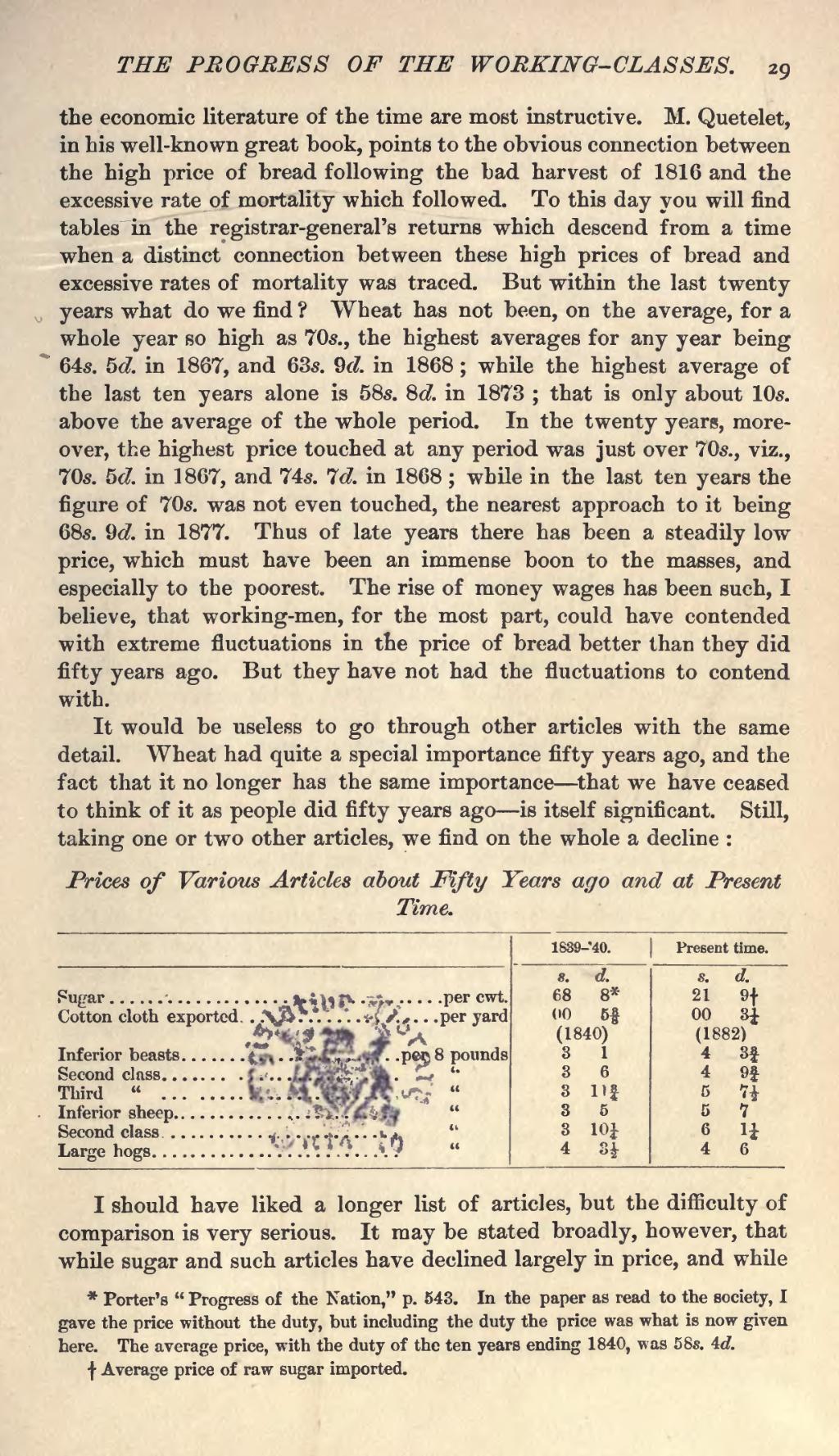the economic literature of the time are most instructive. M. Quetelet, in his well-known great book, points to the obvious connection between the high price of bread following the bad harvest of 1816 and the excessive rate of mortality which followed. To this day you will find tables in the registrar-general's returns which descend from a time when a distinct connection between these high prices of bread and excessive rates of mortality was traced. But within the last twenty years what do we find? Wheat has not been, on the average, for a whole year so high as 70s., the highest averages for any year being 64s. 5d. in 1867, and 63s. 9d. in 1868; while the highest average of the last ten years alone is 58s. 8d. in 1873; that is only about 10s. above the average of the whole period. In the twenty years, moreover, the highest price touched at any period was just over 70s., viz., 7Os. 5d. in 1867, and 74s. 7d. in 1868; while in the last ten years the figure of 7Os. was not even touched, the nearest approach to it being 68s. 9d. in 1877. Thus of late years there has been a steadily low price, which must have been an immense boon to the masses, and especially to the poorest. The rise of money wages has been such, I believe, that working-men, for the most part, could have contended with extreme fluctuations in the price of bread better than they did fifty years ago. But they have not had the fluctuations to contend with.
It would be useless to go through other articles with the same detail. Wheat had quite a special importance fifty years ago, and the fact that it no longer has the same importance—that we have ceased to think of it as people did fifty years ago—is itself significant. Still, taking one or two other articles, we find on the whole a decline:
Prices of Various Articles about Fifty Years ago and at Present Time.
| 1839-40. | Present time. | ||||
| s. | d. | s. | d. | ||
| Sugar | per cwt. | 68 | 8[1] | 21 | 9[2] |
| Cotton cloth exported | per yard | 00 | 538 | 00 | 314 |
| (1840) | (1882) | ||||
| Inferior beasts | per 8 pounds | 3 | 1 | 4 | 334 |
| Second class | " | 3 | 6 | 4 | 934 |
| Third" | " | 3 | 1034 | 5 | 712 |
| Inferior sheep | 3 | 5 | 5 | 7 | |
| Second class | " | 3 | 1014 | 6 | 114 |
| Large hogs | " | 4 | 3 12 |
4 | 6 |
I should have liked a longer list of articles, but the difficulty of comparison is very serious. It may be stated broadly, however, that while sugar and such articles have declined largely in price, and while
